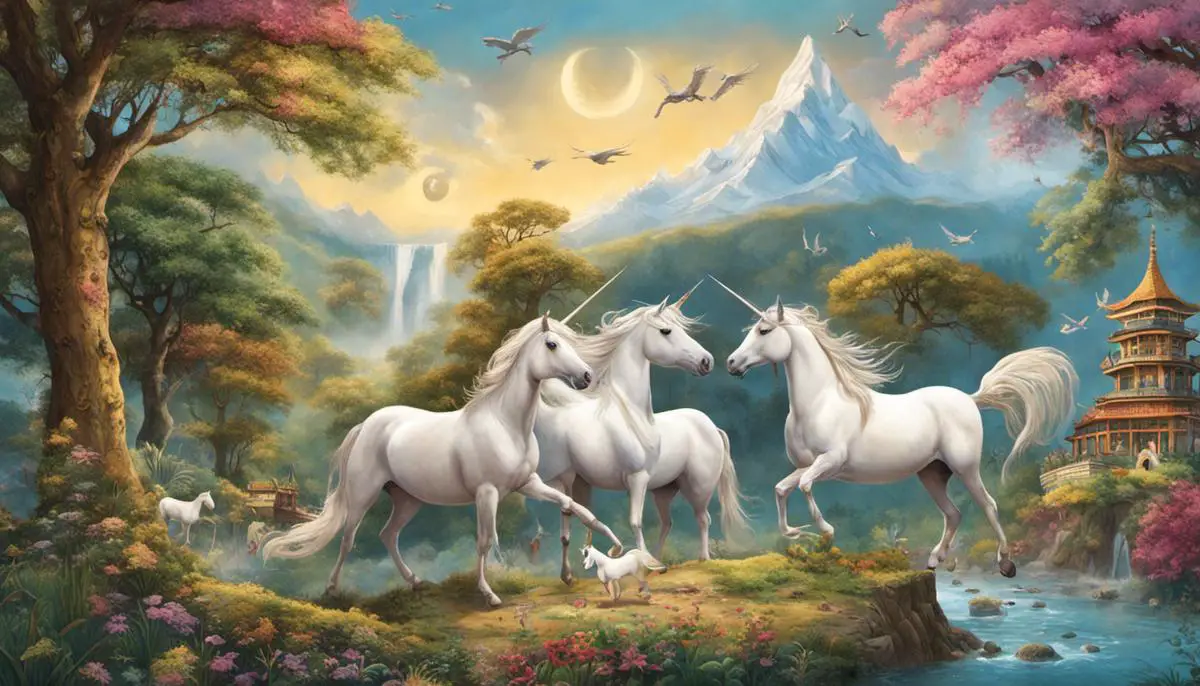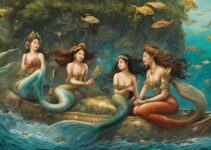Table of Contents
The mythical beast known as the dragon pervades the lore and legend of cultures across the globe, embodying a multitude of symbolic meanings and playing significant roles in various societal narratives. With deep roots in the ancient past, dragon myths have evolved and diversified significantly among different cultures, forming a rich tapestry of mythic lore that spans from East to West. In Asian regions such as China, Japan, and India, the dragons symbolize power, strength, and auspiciousness while in Europe, they often signify chaos and malevolence. In the diversity of Native American folklore, dragon-like beings, though less commonly mentioned, hold unique and impactful roles within creation stories and cultural narratives. Understanding these myths illuminates the complexity and depth of human storytelling and its profound influence on our cultural evolution.
Dragon Myths in Asian Cultures
Drawing on centuries of mythology, the dragon—a mythical creature of formidable power and majesty—holds a prominent place in various cultures’ lore worldwide. In particular, Asian societies exhibit a distinguishable interpretation compared to other world cultures. This article delves into the analysis of Asian dragon myths and their stark contrast with their global counterparts.
Significant in the mythological sphere, the dragon embodies distinct characteristics across Asian cultures. Chinese cultures, for instance, typify the dragon as a benign, celestial being symbolizing power, wisdom, and prosperity. Contrarily, in Japanese mythology, the dragon—master of the seas—is often portrayed in less austere light, as serpentine water-gods with an array of conflicting traits. Similarly, Vietnamese legends depict dragons merging with native wildlife, establishing a kinship with the aquatic realm while symbolizing life, growth, and imperial authority.
Further east, Indonesian and Filipino cultures raise the Naga and Bakunawa, impressive dragon-like beings—yet with distinct visual representations and connotations. These entities engender the quintessential Asian dragon portrayal: water-associated wisdom bearers demonstrating strong protective instincts.
Contrastively, western mythologies integrate dragons as epitomes of adversity. European dragon depictions, such as in the Greek Hydra or Norse Fáfnir, feature as antagonists, often maligned, malevolent creatures to be conquered. These dragons—fire-breathing, winged beasts—embody chaos, embodying trials to test heroes’ bravery.
Interestingly, the Mesoamerican deity Quetzalcoatl, a feathered serpent, hints at a more complex characterization—exhibiting both creative and destructive aspects, indicating cultural nuances in dragon portrayal beyond a simple east-west dichotomy.
Thus, while Asian dragon myths often embody wisdom, prosperity, and close ties to natural elements, other world cultures typically present dragons as chaotic, destructive adversaries. This distinct disparity suggests the influence of cultural, geographical, and historical contexts on myth creation.
Furthermore, tracing the evolution of these diverging cultural interpretations could provide a richer understanding of how societies view power and aspects of the unknown. The one constant among this wealth of lore: dragons continue to inspire reverence, fear, and a deep sense of awe, firmly securing their place in the realm of cultural mythology worldwide.
Yet, this broad study merely scratches the surface. Each dragon myth, in its unique cultural context, is a rich tapestry of symbols and meanings eagerly awaiting more in-depth exploration and interpretation. Dragon myths, therefore, not only represent fascinating folklore but also serve as valuable resources for comparative mythological and cultural studies—an endeavor ever enticing to the exuberantly curious academic minds.
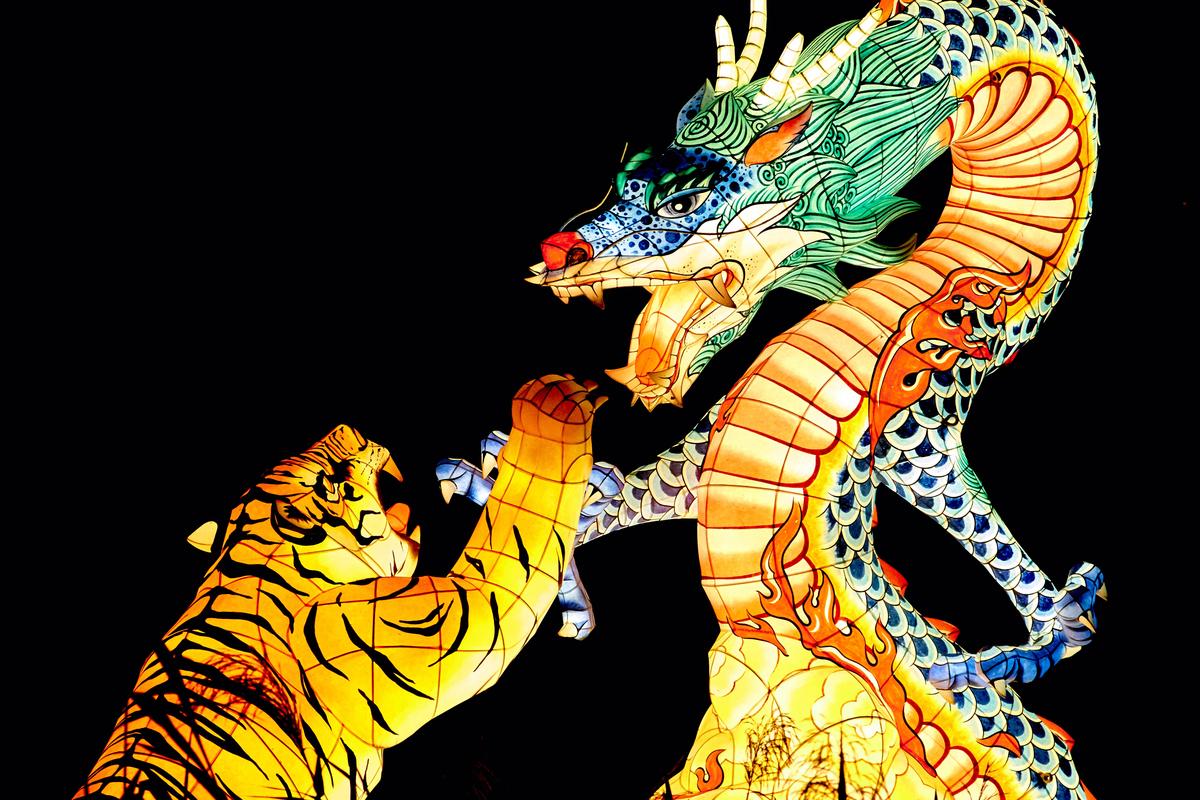
Dragon Myths in European Cultures
The Role of Dragon Mythology in Shaping Medieval European Cultural Narrative
Coiling through the annals of time itself, dragon mythology has always held humanity in its fierce, metaphorical grip. Considered a potent symbol of power, wisdom, wealth, and often destruction, dragon myths have significantly impacted the cultural fabric of societies. While the influence of dragon myths in various cultures is vividly extensive, medieval Europe’s interpretation introduced a novel layer in the cultural mythology. Embellishing folklore, literature, societal ideals, and fears, dragons became more than a mere symbol but rather a metaphysical tool and social construct within the European sphere.
Within medieval Europe, dragons served as a binary construct defining the moral compass of the society at the time. These myths were predominantly relayed through folklore and religious texts, transforming dragons into metaphoric embodiments of evil. Events such as the narrative of Saint George slaying a dragon provided an emblem of good triumphing over evil and thus were instrumental in sculpting the moral values of society.
An intriguing aspect of European dragon mythology lies within its socio-political implications, where dragons were associate with national identity. Entities like the Welsh red dragon, present on the national flag, underscores this bond. However, beyond identity, these rampant dragons symbolized the unyielding power of monarchs, serving as reminders of royal supremacy.
Further, European dragon mythology influenced not merely the collective societal conscience but the microcosm of individual mindsets as well. Evoking a potent fear of the unknown, dragons were emblematic of uncharted territories and the cryptic perils they harbored. Yet, despite this dread, the pursuit of dragons signaled a quest for knowledge and exploration—a paradox reflecting the intricacies of human nature.
A fantastical yet pivotal component of European culture, dragon mythology equally influenced the sphere of the arts. The visceral imagery of these majestic beasts inspired countless artistic creations, from grandiose sculptures to detailed illustrations in manuscripts. Furthermore, these figures carved a niche in the realm of literature, stirring imagination in tales filled with adventure and valor.
Last but not least, a consideration of European dragon mythology would be incomplete without touching upon the role of alchemy. Regarded as processes of transformation, alchemy viewed dragons as shifters of form and the epitome of metamorphosis, adding a layer of philosophical depth to the narrative.
The legacy of dragons, embedded deep within the medieval European psyche, continues to endure in stories, art, and cultural symbolism. They are compelling examples of how mythology can transcend the realm of the fantastical to shape the very foundation of societies over time.
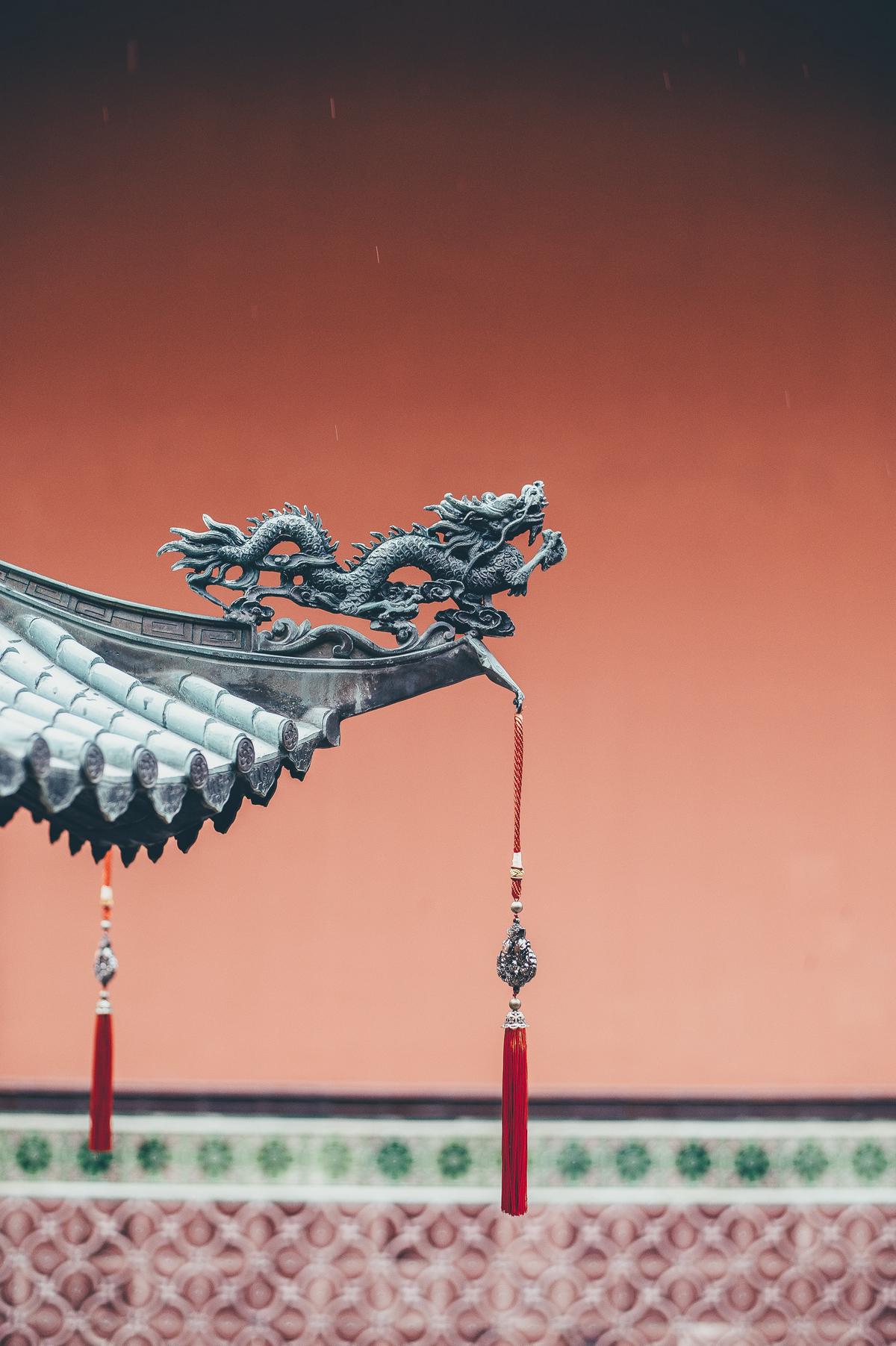
Photo by anniespratt on Unsplash
Dragons in Native American Folklore
Transitioning from the already navigated Asian and European dragon mythologies, it’s of immense worth to plunge into the less-explored narratives of Native American dragon-like creatures. These narratives, although wrapped under layers of folklores rather than explicitly labeled dragon myths are particularly intriguing, reflecting the riveting psyche and cultural specificities of Native American societies.
Moving further from the principle confines of Western binary thinking, Native American culture provides a nuanced portrayal of dragon-like beings. Free from a simplistic evil versus good distributions, these creatures were perceived through a prism of balance, imbued with both benevolent and malevolent qualities, echoing the interconnected philosophies of life and nature intrinsic to Native American cultures.
While creatures extrapolated to dragons are not ubiquitous in all Native American mythologies, occurrences in some tribes paint a picture worth pondering. The Piasa, a dragon-like creature rooted in Illini lore, emanates defiance towards European dragon stereotypes. It embodies duality, represented as a protector and a threat, thus serving as a metaphor for life’s trials and tribulations.
An intriguing case is the Unktehi of the Dakota tribe, embodying an embodiment of cataclysmic antagonism and the cycle of life and destruction. These water-dwelling creatures, postulated as destructive forces during the Great Deluge, further mystify the Native American interpretation of dragon-like creatures, offering profound philosophical interpretations of establishment, devastation, and rebirth.
The horned serpent, or ‘Uktena’, in Cherokee mythology, and ‘Misi-kinepikw’ in Cree lore, echo a cosmological connection tying the earthly and celestial realms. Seen as powerful beings capable of granting insight or inflicting punishment, they represent an intensive spectrum of meanings from the fear of the unknown to reverence for power beyond human comprehension.
Such multiplex characterizations of dragon-like entities demonstrate the rich complexity and subtlety of Native American societies’ folklore. These narratives, although distinct from the conventional dragon myths, are not mere fantastical creations, but profound metaphorical constructs reflecting the inherent paradoxes and symbiotic relationships within nature and society.
Marking their imprint in totem poles and etchings, dragon-like entities in Native American mythologies reveal the tribes’ deep-rooted union with the natural and supernatural. The creatures’ symbolism extends from heroic tales to moral lessons, from cosmic understanding to the mysteries of existence, alluding to their comprehensive significance in Native American societies.
In critiquing dragon archetypes, one must appreciate that these mythical creatures’ representations are not static but fluid constructs molded by cultural, geographical, and temporal specifics. The journey from Hydra to Fáfnir, from Quetzalcoatl to Piasa, each narrative adds a distinct layer to the interpretation of dragons, pushing one to understand far beyond the literal, delving into the metaphorical domains.
Close examination of dragon-like beings in Native American folklore indeed presents a panoramic viewpoint, greatly enhancing our understanding of dragon myths across the globe. It indeed stands as a testimony that dragon-like beings are not merely mythical monsters or symbols of power but timeless cultural embodiments reflecting the complexities and intricacies of human society and thought.
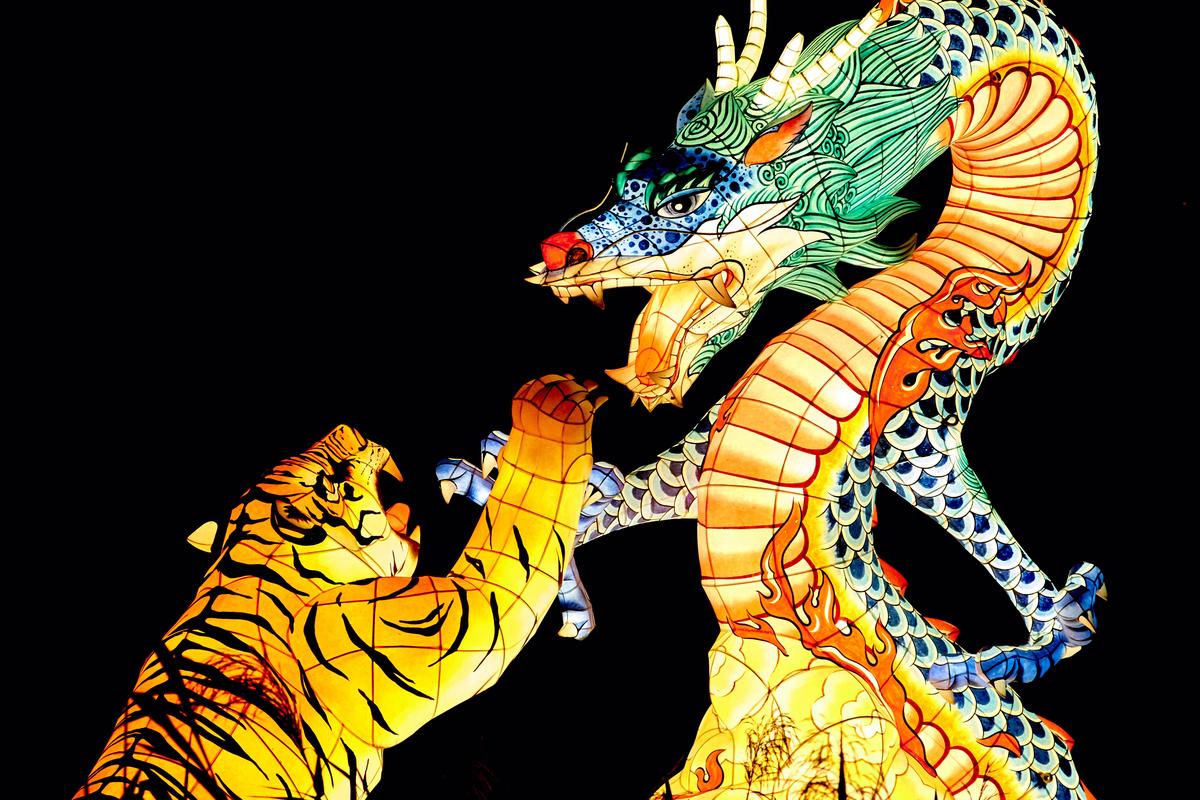
Modern Interpretation and Influence of Dragon Myths
Delving deeper into the legacy of dragons, it becomes apparent the myths have permeated deep into the popular narratives today. The ceaseless fascination for these mythical beasts, whether indigenous or adopted, has spewed forth an array of dragon-inspired literature and pop culture references.
The manifestation of dragons in modern literature offers a miscellany of roles that goes beyond the binary depiction of olden, medieval society. Dragons, once primarily symbols of evil to be vanquished by the protagonist, now don the roles of key characters having their own intrinsic stories and complex personalities. They are brought forth from the realm of symbolism into the domain of character development.
In children’s literature, for instance, the dragon, instead of being the antagonist, often emerges as the confidant or guide to the child protagonist, subtly subverting traditional norms. This is markedly visible in books like Cressida Cowell’s ‘How to Train Your Dragon’ series. Similarly, in adult fiction, characters of dragons such as Smaug from ‘The Hobbit’ by J.R.R. Tolkien, reveal intricate characters with idiosyncrasies, building multidimensional, intellectually challenging narratives.
Additionally, the evolution of dragon depictions extends their reach into various realms of art and illustration, and even into the heart of interactive entertainment, video games. The impact of dragons on visual art has shifted from traditional sculptures and illustrations rooted in culture, to modern digital art, animations, and game designs.
In pop culture, dragons rest at the epicenter of series like ‘Game of Thrones’, inspired by George R. R. Martin’s ‘A Song of Ice and Fire’. Here, the dragons, along with their cultural significance, bring forward themes of power, supremacy, and ancestry. The series showcases the contrast between the might-inspiring fear of dragons and their nurturing, mother-child relationship with certain characters, highlighting the paradox of human nature and our relation with power and the unknown.
The metaphorical representation of transformation, originally aligned with the imagery of dragons in alchemy, finds echoes in Charles Darwin’s concept of evolution. Dragons’ inherent association with the element of fire further cements their symbolism for transformation, as they destroy and create simultaneously, reinforcing the cycle of life and death, echoing the Unktehi of Native American mythologies.
As signals of national identity, dragons have come to be icons in sports culture, particularly in team logos and mascots. Taken out of their mythological contexts, these dragons now represent strength, dexterity, and a formidable spirit — attributes strived for in competitive sports.
Dragons, thus, continue to breathe inspiration into various facets of society, from literature and art to popular media and sports. Despite the astronomical gap between the realities of medieval society, Native American tribes and the modern world, the legacy of dragon mythology persists. The resilient image of the dragon continues its flight through history, perpetuated through tales woven into the fabric of our cultural memory, and re-emerging as a significant archetype in contemporary narratives.
In conclusion, the dragon, undeniably, remains one of humanity’s most enduring symbols, an imagery that has stood, and continues to stand, the test of time and cultural evolution. The metamorphosis, spanning across continents and centuries, showcases the fascinating power of cultural diffusion and syncretism, reminding us of the capricious yet mesmerizing nature of myths and how they continually shape, and are shaped by, human civilization.

As the echoes of ancient dragon myths continue to resonate in our contemporary era, their influence has been reinterpreted and reshaped in modern literature, films, and other forms of media. This legacy attests to the enduring power and allure of these mythical creatures and their ability to embody primal human fears, aspirations, and wonder. The various cultural interpretations of dragons, from ancient folklore to modern fantasy fiction, serve as compelling lenses into our collective imagination and reflect our ongoing quest to understand and express the many facets of human experience. A symbol that has evolved and endured through centuries, the dragon’s journey is a vibrant testament to the richness of human mythology and its lasting imprint on our shared cultural landscape.


